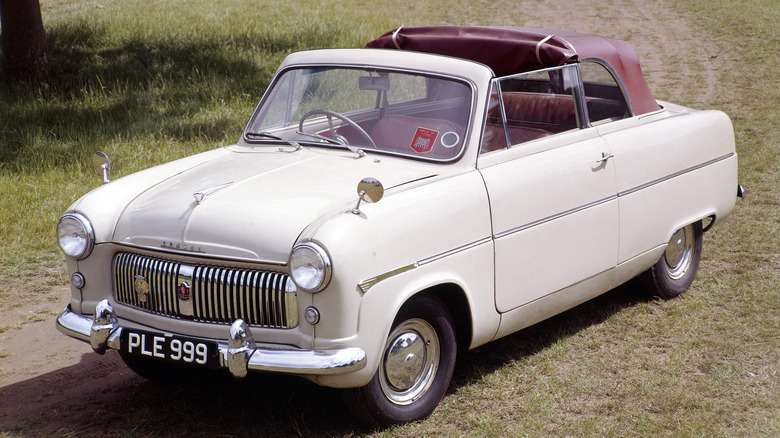What Is The MacPherson Strut Suspension System And Who Invented It?
Perhaps you're on your way to buy a new car, and you may not know it yet, but a suspension is just as important as other key components, such as the engine, powertrain, and braking system. Top mechanic-approved tips for buying a used car almost always include a pointer on how to check worn-out suspension components, wheel bearings, and other parts. If you are eyeing a front-wheel drive vehicle, it's very likely that it is equipped with a MacPherson strut suspension, the most common assembly for FWD cars.
Invented by Earle S. MacPherson, the MacPherson strut suspension is a type of independent suspension design that combines the shock absorber and coil spring into a single unit. Theoretically, the system is engineered to ensure stability and comfort during driving by supporting the vehicle's weight, absorbing road shocks, and helping maintain tire contact with the road.
Compared to other types, such as pushrod suspension, MacPherson has fewer components, but each plays an important role in the assembly's performance. The coil spring absorbs road impacts, while the shock absorber or damper controls the movement of the spring. Meanwhile, a strut housing provides structural support, as its top part directly connects to the vehicle's body, while its bottom is attached to the steering knuckle.
While there may be variations, the simplicity of the MacPherson's basic design translates to space efficiency, allowing for more room in the engine bay. This is why it's the go-to choice for car manufacturers producing compact, front-wheel-drive and unibody vehicles.
Meet the man behind the MacPherson strut suspension
American engineer Earle S. MacPherson invented the MacPherson strut suspension in the late 1940s. Word has it that he came up with the idea while working with General Motors, the owner of Chevrolet. He allegedly created an early version of the system for the Chevrolet Cadet, with the goal of introducing a more cost-effective and space-saving suspension for cars, knowing that GM was shifting to smaller and more economical vehicles after World War II. However, due to a shortage of raw materials, the project was scrapped.
Following the turn of events, MacPherson parted ways with GM, but he was quickly invited to join Ford Britain. Under the Blue Oval, MacPherson was able to salvage and further develop the scrapped design, with the first MacPherson independent front strut suspension debuting with the Ford Consul in late 1950, and the Zephyr just a month after.
It's worth noting, however, that the two models were only released in the UK. It took a few more years before the MacPherson strut spread in other European markets, with Ford Germany launching the 17M in 1957. Japanese automakers also took notice, with the Toyota Corolla being the first Japanese passenger car to feature this setup. As more international brands embraced MacPherson's invention, the suspension gradually became the most common front suspension system, and it's used by an estimated 80% of passenger cars today.

